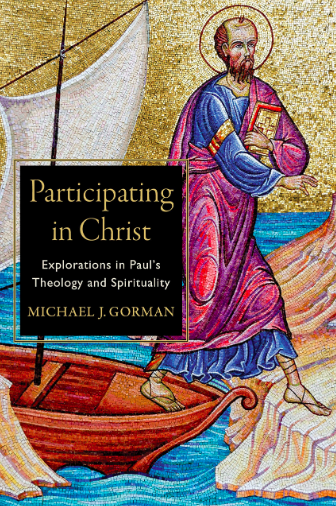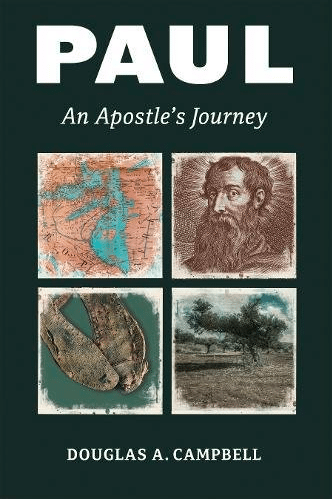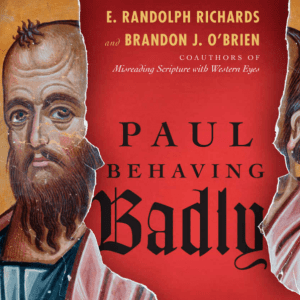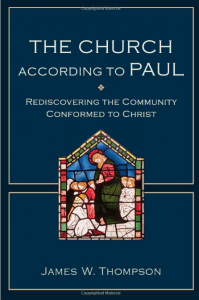 I have been reading theological books for forty plus years. In that time only one truly great piece of writing stands out as a book deserving reading for the poetry of its prose, and that was Albert Schweitzer’s Quest of the Historical Jesus, a book with a story so good and a conclusion so wrong. Yet, no book stands next to it when it comes to prose. Until N.T. Wright’s Paul and the Faithfulness of God, a book zippered up with eloquence and tightened by potent observations. Read it for the prose.
I have been reading theological books for forty plus years. In that time only one truly great piece of writing stands out as a book deserving reading for the poetry of its prose, and that was Albert Schweitzer’s Quest of the Historical Jesus, a book with a story so good and a conclusion so wrong. Yet, no book stands next to it when it comes to prose. Until N.T. Wright’s Paul and the Faithfulness of God, a book zippered up with eloquence and tightened by potent observations. Read it for the prose.
I should perhaps note that when Tom was the good bishop he had many other responsibilities; now freed to be a professor we might long for the day when his big books were only 700 pages or so!
In this chp we get to the heart of the new contribution that PFG will make; here is a full display of the imperial cult as a/the context for understanding Paul’s claim that Jesus is Lord. That Tom knows this claim will be given considerable pushback explains the detail and vigorous prose and evidence-based conclusions. There can be no doubt the emperor, from Augustus on, was worshiped or prayed to (and for); the issue will be how much this figured into Paul’s theological claims about Jesus as Lord.
So what is, or better yet, was religion in Paul’s world?
When Paul arrived in Ephesus, Philippi or anywhere else with his message about the one God and his crucified and risen son, he was not offering an alternative way of being ‘religious’ in the sense of a private hobby, something to do in a few hours at the weekend. He was offering a heart transplant for an entire community and its culture. If ‘the centrality of Artemis was part of what it meant to be an Ephesian,’43 it is not surprising that Paul’s ministry there caused a riot (255).
By the same token, even the small beginnings of a ‘thick description’ of greco-roman culture such as we have made here indicate that when Paul arrived in a town and began to speak about the one true God, and about this God raising from the dead a man called Jesus who was now to be invoked, worshipped and hailed as kyrios, there was a whole network of assumptions, vested interests, long-cherished traditions, hopes and fears both personal and civic, which would be aroused. When the antagonists in Philippi declare that Paul and Silas are Jews, throwing the city into an uproar by ‘teaching customs which it’s illegal for us Romans to accept or practise’,122 and when the crowd in Thessalonica yell out that Paul and Silas have been ‘turning the world upside down’ by ‘acting against the decrees of Caesar, saying that there is another king, Jesus’,123 we can understand, in view of the evidence so far surveyed in this chapter, that these, though carrying an inescapably political dimension, were fundamentally to do with a strong, deep-rooted culture, and within that culture with something we may as well call ‘religion’. ‘Religion’ may not be ultimately the best category for describing or analyzing what Paul was doing, or what he thought he was doing. But it is certainly a key and basic element in what his contemporaries will have seen him doing and heard him saying. And with ‘religion’, in all of these complex senses, we are dealing with what today we might call ‘the fabric of society’, the things which held people together and gave shape and meaning to their personal and corporate life (273-274).
But a pressing issue in today’s scholarship is Caesar or, to ramp him up one notch, Empire.
The Roman empire was the great new Fact of the world which included the Palestine of Jesus’ boyhood and the Cilicia of Saul’s. It proclaimed itself as a bright new world: new roads with new soldiers to march along them, new taxes and new coins to pay them with, new administrations and law- courts, local officials falling over themselves to erect splendid, presti- gious new temples to the divine royal house. New crosses by the roadside, displaying the bird-pecked remains of rebels. Whole cities were redesigned to give honour to the emperor and his family, portrayed, often enough, in the guise of the ancient pagan divinities. Perhaps, after all, the gods had come down in human form. Rome took the eagle as its symbol; popular legend and iconography suggested a direct link to Jupiter, the highest god of all (279).
Now to Empire:
It was not by military force alone that Augustus consolidated his power, or that his successors maintained it. It has been shown in great detail that from the beginning the empire used every available means in art, architecture, literature and culture in general – everything from tiny coins to the rebuild- ing of entire city centres – to communicate to the Roman people near and far the message that Augustus’s rise to power was the great new moment for which Rome, and indeed the whole world, had been waiting. This is what I mean, in this broad sense and in the present context, by ‘rhetoric’ (294).
Wright provides extensive discussion of the empire narrative, the narrative that says history is coming to a golden moment in the Empire’s Caesars, at work in the Roman world among the Roman historians — from Horace and Ovid and Livy but especially Virgil, about whom Wright makes an important observation, one with which I agree:
There is every reason to suppose that an intelligent boy growing up in Tarsus, or for that matter in Jerusalem, would know at least its [Virgil’s Aeneid’s] main themes, if not its finer details (307). [And now to the conclusion:] “But his grand narrative stands to the grand narrative of Israel’s scriptures, together with their putative final chapter, at worst as a kind of parody, at best as another altar to an unknown god” (311).
Wright ventures into the Empire as religion, or the imperial cult, with a swirling set of paragraphs loaded up with nuances and claims that in spite of all this variety there remains something we can call the “imperial cult.”
- There was a long tradition in the East of a divine monarchy.
- There was a long tradition as well of worshiping the goddess Roma, Dea Roma.
- Hercules was long associated with someone transcendent, with the divine. Flanking him are intellectual and civic heroes seen as gods.
- There is the decline of traditional religion and the decision by Augustus to restore the ancient religion/cult, revealing the connection between the new leader and the old gods.
- Homes and some more localized settings had their own shrines and religious settings(Lares and Penates). By the use of one word — augusti — these got connected to Augustus himself, leading religious customs to be more connected to the emperor.
- Traditional deities were absorbed and renamed in new cultures, as when the Greek gods got new Latin/Roman names and became Roman gods. Kings got connected to these gods as well. Augustus was portrayed as Jupiter or Zeus.
- And Rome’s power was absorbed when local elites, chosen to represent Rome, were unafraid in expressing gratitude to Rome for their gifts and protection.
Now we get to the “divinity of Augustus,” something ambiguously worded but seemingly clear in implication: the man was divine. From a decree in Asia we learn these things:
Augustus has bestowed great benefits, including ‘salvation’; Asia has held a competition to see who can propose the best way of honouring him, which has been won by the proconsul who suggested this reordering of the calendar. Augustus’s rule has proved a new beginning for the world, and for individuals. He has been raised, as it were, to cosmogonic stature; the Roman imperial system has been equated with the cosmic structures of the world. The events surrounding Augustus’s coming to power are therefore ‘good news’, euangelia, a word virtually always in the plural in such contexts, though, interestingly, always in the singular in the New Testament. This ‘good news’ is not merely a nice piece of information to cheer you up on a bad day, but the public, dramatic announcement that something has happened through which the world has changed for ever and much for the better (327).
Wright catalogs the evidence around the Roman Empire. Everywhere cities had altars and centers for Augustus; space was shaped to focus on the emperor. Here is how Wright puts it together for a good reminder:
There was indeed, then, no single thing we can call ‘the emperor cult’ at any time during the reign of Augustus. However, from the hints in Horace and Virgil to the enthusiastic temple-building in Asia and Palestine, to the soldiers’ drinking-cups in Switzerland, Augustus was the name that was found, literally, on everybody’s lips. The cults worked their way into domes- tic and workshop shrines, and onto signet rings, oil lamps and numerous other small artefacts. Libations were offered to the emperor at every feast whether public or private, a ruling from as early as 30 BC in the enthusiastic aftermath of Actium. However varied the cultic phenomena, however piecemeal the development, however ambiguous some of the phraseology, people were doing with Augustus what they had long done with the ancient pantheon: building temples to his honour, invoking him in prayer, offering sacrifice to him (334).
The cults, in all their variety, and for all their blending of Augustus with other divinities and especially with Roma herself, came down to a focus on Augustus himself as the lynch-pin to the whole symbolic universe. Thus all the lines, east and west and in Rome itself, pointed to one conclusion, which was confirmed shortly after the great man finally died on 19 August in AD 14. Numerius Atticus, a senator, declared on oath that he had seen Augustus ascending, like Romulus, into heaven. Livia, Augustus’s widow, paid him a million sesterces for his trouble. Augustus thus received in death what he had refused to receive in his life. Suddenly, therefore, what was formerly forbidden now became urgent. A shrine for Augustus was at last built in Rome itself, priests were appointed, with Livia herself as priestess and a new college of priests, the sodales Augustales, consisting of leading senators. A golden image of the late emperor was placed in the temple of Mars, the architectural focus of Augustus’s civic building programme. Other rites and ceremonies were voted. Whereas with Julius Caesar it had taken some time for deification to occur, with Augustus it happened very quickly. This was the final, public, dotting of the ‘i’s and crossing of the ‘t’s in the message that the world had been able to read for some time (335).
Augustus then had climbed to top of Olympus; Tiberius, his successor, was immediately “son of god,” or son of the divine Augustus. Tiberius was moody; Gaius Caligula an egomaniac. Claudius kept pace. Nero was unstable but he too was given similar honors.
This is the makings of empire ideology and counter-ideology on the part of the apostle Paul. Was Paul, then, using language to counter the imperial cult in its various forms and ideas?
You may know that Joe Modica and I were co-editors of a book called Jesus is Lord, Caesar is Not, a book that examined claims made by scholars about anti-empire ideology at work in the NT authors. Our collection of authors routinely argued the evidence was overcooked. Not one of the authors under examination put together as much evidence as is put together here by Tom Wright, meaning we are in need of yet one more evaluation.











